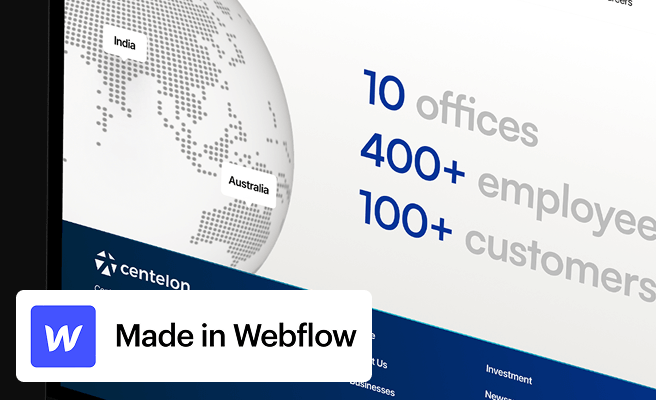Version Control
<p>Version control is a critical aspect of software development and digital product design, ensuring that teams can collaborate efficiently and track changes over time. It allows multiple team members to work on a project simultaneously without overwriting each other's contributions. This process is indispensable for maintaining the integrity and history of a project.</p>
<p>In the context of sustainable UX design for climate tech, version control becomes even more essential. Projects in this niche often involve multiple stakeholders, including product designers, sustainability consultants, and developers, who must work together seamlessly to create innovative solutions.</p>
<h2>Importance of Version Control</h2>
<p>Version control systems (VCS) like Git, Subversion, and Mercurial, allow teams to manage changes to source code, track project history, and collaborate more effectively. These tools offer several benefits:</p>
<h3>1. Collaboration</h3>
<p>Teams can work on different parts of a project simultaneously. For instance, one designer can focus on the user interface while another works on backend functionality, all without conflicts.</p>
<h3>2. Tracking Changes</h3>
<p>All changes are tracked with a detailed history, enabling team members to see who made specific changes and why. This is particularly useful for climate tech projects where regulatory compliance and documentation are crucial.</p>
<h3>3. Reverting to Previous Versions</h3>
<p>If a mistake is made, it's easy to revert to an earlier version of the project. This feature is invaluable in maintaining the stability and integrity of the project, especially when dealing with complex systems like climate modeling tools or sustainable agricultural software.</p>
<h3>4. Branching and Merging</h3>
<p>Version control systems allow teams to create branches for new features or experiments. Once tested and approved, these branches can be merged back into the main project. This ensures that the main project remains stable while new features are developed and tested.</p>
<h2>Use Cases in Climate Tech</h2>
<p>Version control is particularly relevant in the climate tech industry, where projects often involve interdisciplinary teams and long-term collaboration. Here are some specific examples:</p>
<h3>1. Carbon Capture Software</h3>
<p>Teams developing carbon capture software can use version control to manage changes in algorithms and data processing methods. By tracking changes, they can ensure that updates do not compromise the system's accuracy or efficiency.</p>
<h3>2. Sustainable Agriculture Platforms</h3>
<p>Developers working on sustainable agriculture platforms can use version control to manage updates to data visualization tools, user interfaces, and backend systems. This ensures that all changes are documented and reversible, minimizing the risk of data loss or corruption.</p>
<h3>3. Renewable Energy Management Systems</h3>
<p>Version control helps teams developing renewable energy management systems to coordinate updates to software that monitors and optimizes energy usage. This is crucial for maintaining system reliability and performance over time.</p>
<h2>Best Practices for Version Control</h2>
<p>Implementing version control effectively requires following best practices:</p>
<h3>1. Commit Frequently</h3>
<p>Make small, frequent commits to ensure that changes are well-documented and easier to manage. This practice helps in identifying issues early and facilitates smoother collaboration.</p>
<h3>2. Write Descriptive Commit Messages</h3>
<p>Each commit should include a detailed message describing what changes were made and why. This is essential for maintaining a clear project history and aiding future development.</p>
<h3>3. Use Branches Strategically</h3>
<p>Create branches for new features, bug fixes, or experiments. This keeps the main project stable while allowing for parallel development and testing.</p>
<h3>4. Regularly Merge Branches</h3>
<p>Merge branches back into the main project frequently to avoid conflicts and ensure that new features are integrated smoothly. Regular merging also helps in catching integration issues early.</p>
<h2>Tools and Resources</h2>
<p>Several tools can help manage version control effectively. Some popular options include:</p>
<ul>
<li><a href="https://git-scm.com/" style="color: #2896FF; text-decoration: underline;">Git</a>: A distributed version control system widely used in the industry.</li>
<li><a href="https://subversion.apache.org/" style="color: #2896FF; text-decoration: underline;">Subversion</a>: A centralized version control system suitable for large projects.</li>
<li><a href="https://www.mercurial-scm.org/" style="color: #2896FF; text-decoration: underline;">Mercurial</a>: Another distributed version control system known for its scalability and efficiency.</li>
</ul>
<p>For climate tech projects, integrating these tools with project management platforms like <a href="https://www.atlassian.com/software/jira" style="color: #2896FF; text-decoration: underline;">Jira</a> or <a href="https://www.trello.com/" style="color: #2896FF; text-decoration: underline;">Trello</a> can streamline workflows and enhance collaboration.</p>
<h2>Conclusion</h2>
<p>Version control is a vital component of sustainable UX design for climate tech, ensuring that teams can collaborate effectively, maintain project integrity, and adapt to changes efficiently. By following best practices and leveraging the right tools, climate tech companies can enhance their development processes and create innovative, sustainable digital products.</p>
<p>Learn more about improving your version control strategies <a href="https://www.atlassian.com/git/tutorials" style="color: #2896FF; text-decoration: underline;">here</a>.</p> <p>To understand the power of design across industries and sectors, view our diverse portfolio of works. <a href="https://www.whatifdesign.co/work" style="color:#2896FF; text-decoration:underline;">View our portfolio</a>.</p> <p>If you’re looking for inspiration to elevate customer and user experience for enterprise-grade products, View our work with the Ministry of Health of Saudi Arabia for curating the UX of an <a href="https://www.whatifdesign.co/work/enterprise-software-for-hospitals" style="color:#2896FF; text-decoration:underline;">Asset Management Tracking Platform</a></p>
<p>Ready to get started? <a href="https://cal.com/akhilak/what-if-design?duration=30" style="color:#2896FF; text-decoration:underline;">Book a 1:1 consultation call</a> with us today.</p>

Let's scale your impact with great design.
Free consultation, no sales pitch
Thank you! Your submission has been received!
Oops! Something went wrong while submitting the form.
Let’s talk
Nothing great is built alone.
Let’s connect about your vision, our work and how we can collaborate.
Get in touch

